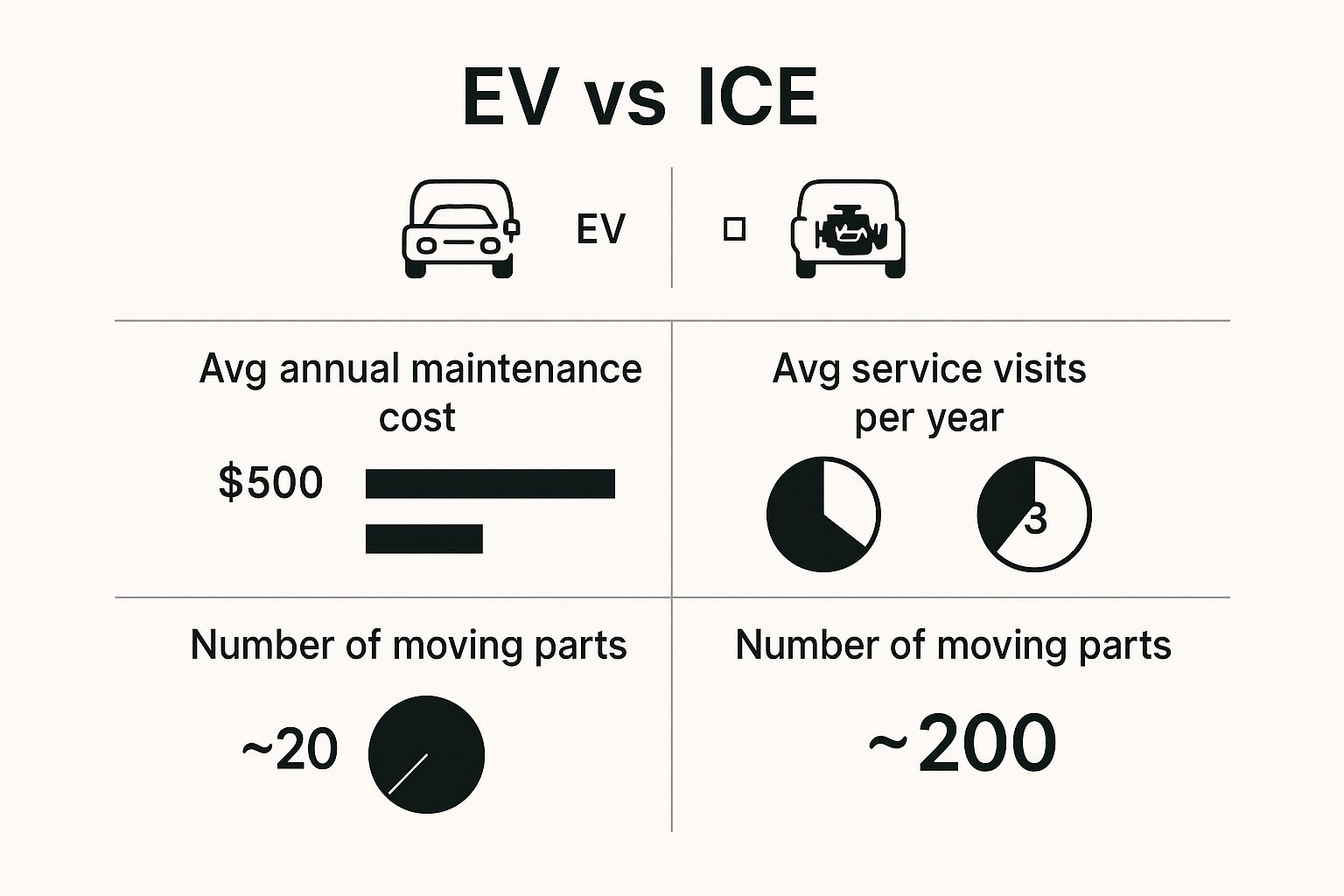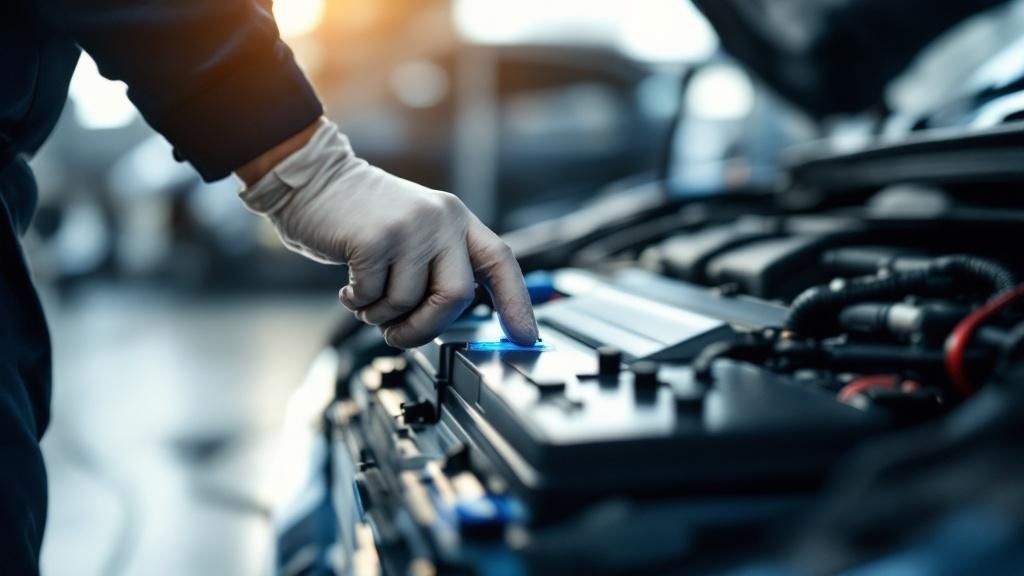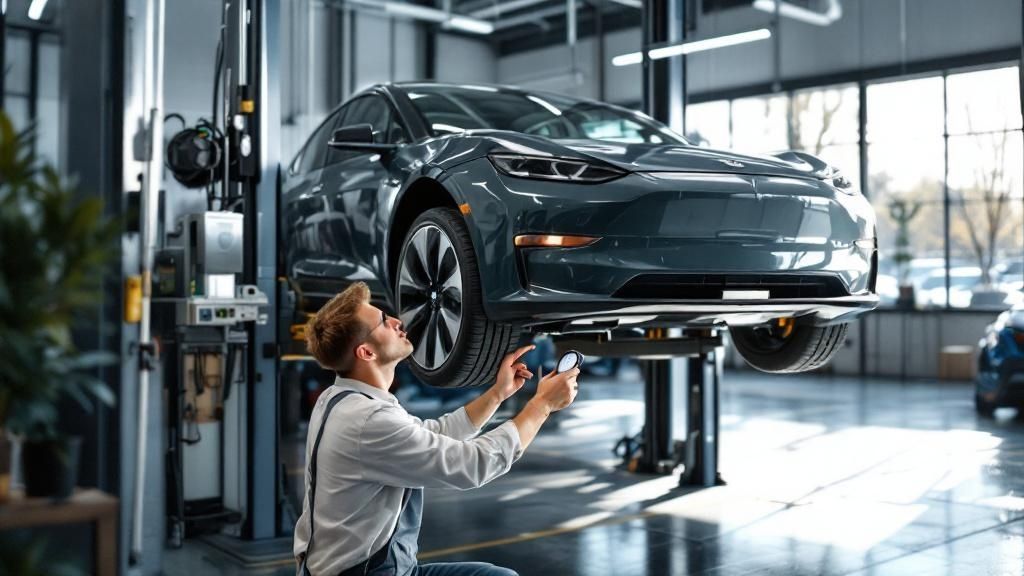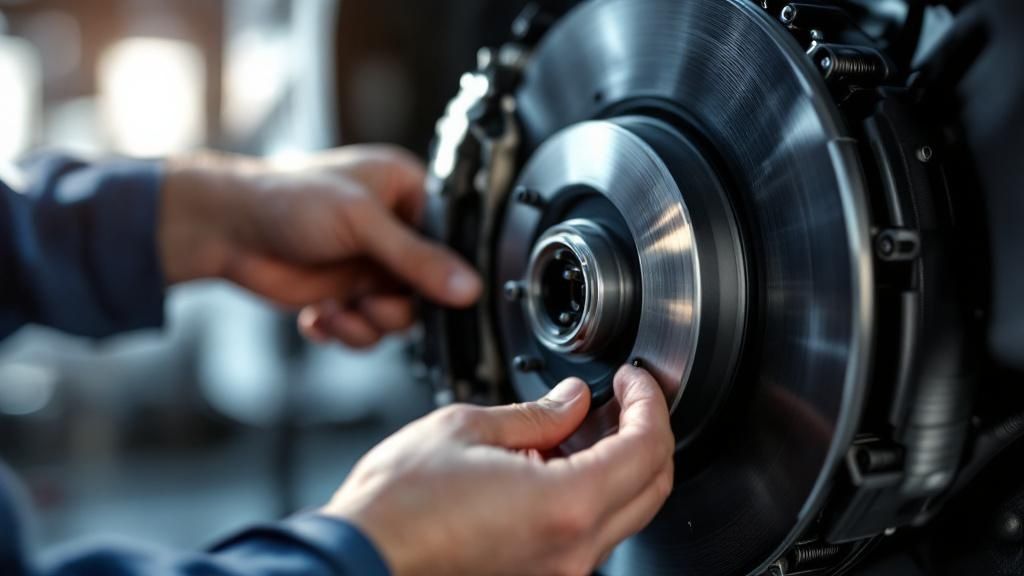If you’re coming from a lifetime of driving gasoline-powered cars, getting into an EV like the Solana feels like stepping into a different world. It’s not just about what you do behind the wheel; it’s about rethinking maintenance from the ground up. You’re trading oil changes and spark plugs for a new set of priorities centered on battery health and software.
Let’s be clear: owning an EV fundamentally changes your relationship with car maintenance. Gone are the days of scheduling your life around regular, messy, and often expensive trips to the mechanic for engine work.
The biggest reason for this shift is the beautiful simplicity of an EV’s powertrain. A traditional internal combustion engine (ICE) is a complex beast with hundreds of moving parts—pistons, valves, belts, and pumps all working in a controlled explosion. An EV, by contrast, is refreshingly straightforward: a battery, an electric motor, and an inverter. That’s pretty much it. This elegant design is the secret behind the low-maintenance appeal of electric cars.
With so few parts to wear out or break, you’ll find yourself visiting the service center far less often. Forget oil changes, new spark plugs, or exhaust system repairs. They’re simply not part of the EV ownership experience.
So, what takes the place of all those old-school tasks? Your focus as an EV owner narrows to a few key areas that are crucial for long-term performance and reliability.
Battery Health Management: The battery is the heart and soul of your EV. Learning smart charging habits and keeping an eye on battery temperature are the most important things you can do. This isn’t difficult, but it is different.
Software and Systems: Think of software updates as your new tune-ups. These over-the-air (OTA) updates pushed directly to your car can boost performance, increase range, and even unlock new features while you sleep.
Essential Mechanical Checks: While the engine is gone, your car still has brakes, tires, and suspension. These core safety systems still need regular checks, and some, like tires, might wear differently due to the instant torque and heavier weight of an EV.
The image below gives a great visual breakdown of just how different the maintenance routines and costs are.

The numbers don’t lie. EVs generally mean fewer trips to the shop and lower annual maintenance bills, all thanks to that simpler design. This isn’t just a trend; it’s a massive economic shift. The global Electric Vehicle Maintenance Market was valued at around $24.83 billion in 2025 and is on track to hit an incredible $85.49 billion by 2034.
Here’s a quick table to put it all into perspective.
This simple comparison highlights the major differences you’ll encounter when you switch from a gasoline car to an electric one.
| Maintenance Task | Electric Vehicle (EV) | Gasoline Car (ICE) |
|---|---|---|
| Oil Change | Not required | Every 5,000-10,000 miles |
| Spark Plugs | Not required | Every 30,000-100,000 miles |
| Exhaust System | Not required | Prone to rust and leaks |
| Brake Wear | Reduced due to regenerative braking | Regular pad/rotor replacement |
| Battery Care | Monitor state of charge, avoid extremes | Check for corrosion, test life |
| Software Updates | Frequent (Over-the-Air) | Infrequent (at dealership) |
| Coolant | For battery/electronics (long-life) | For engine (regular checks/flushes) |
As you can see, the “must-do” list for an EV is significantly shorter and less mechanically intensive.
Even though EV care rewrites the rulebook, some basics of vehicle ownership always apply. If you want a good foundation in what it takes to make any car last, looking at a comprehensive car maintenance checklist can still offer some valuable perspective.
Let’s be honest, an electric vehicle’s high-voltage battery isn’t just another part—it’s the heart and soul of your car. It’s also the most expensive component, so proper care is non-negotiable. Forget the generic advice you’ve heard; let’s get into the practical, real-world strategies that actually make a difference for your battery’s health and performance.
The single most important principle for battery care is managing its State of Charge (SOC). Think of your battery like a muscle. You wouldn’t push it to its absolute maximum or run it to complete exhaustion every single day, right? The same logic applies here. Constantly charging to 100% or letting it drain to 0% puts unnecessary strain on the battery cells.
For your daily driving needs in a Solana EV, the “20-80 rule” is the golden standard. Aim to keep your charge somewhere between 20% and 80%. This simple habit dramatically reduces stress on the battery, slowing down its natural aging process. Thankfully, most modern EVs, the Solana included, have settings that let you cap the maximum charge, making this incredibly easy to follow.

An EV battery in a temperate climate, charged correctly, can expect to lose as little as 1.8% of its capacity per year. Following the 20-80 rule is one of the most effective ways to achieve this slow degradation rate and preserve your driving range for years to come.
Not all chargers are created equal. How you charge is just as critical as how much you charge. Each method has its place, and knowing when to use which is a cornerstone of smart EV ownership.
Level 1 (AC Charging): This is your basic household outlet. It’s the slowest way to charge, but it’s also the kindest to your battery. Perfect for overnight top-ups if you have a short commute and aren’t in a rush.
Level 2 (AC Charging): This is the sweet spot. Commonly installed at home or found at public stations, Level 2 chargers offer a much faster charge than Level 1 without putting the battery under significant stress. It’s the ideal solution for most daily charging routines.
DC Fast Charging (DCFC): Think of this as the espresso shot for your EV—great for a quick boost on a long road trip. While it’s incredibly convenient, relying on it too often, especially in hot weather, can accelerate battery degradation. The high-powered current generates a lot of heat, which is the number one enemy of battery longevity. Save it for when you really need it.
This strategic approach is more relevant than ever. The global EV market is projected for major growth in 2025, and while home charging can be 25% to 60% cheaper per kilometer than gas, public charging costs are on the rise in some places. You can dig deeper into these trends and what they mean for EV owners in this insightful BNEF forecast analysis.
Your vehicle’s Battery Management System (BMS) is the unsung hero working 24/7 behind the scenes. This onboard computer is your battery’s dedicated guardian, protecting it from threats like overcharging, overheating, and extreme cold.
The BMS is constantly monitoring cell temperatures, voltage, and the overall State of Health (SOH). Many EVs, including the Solana lineup, share some of this data right on your dashboard or through a companion app. You need to pay attention to its signals. A sudden drop in your estimated range or a persistent warning light isn’t something to ignore; it could be an early sign of a problem that needs a professional look.
For example, if you live in a hot climate and notice your range is always lower on scorching days, that’s your BMS in action. It’s actively protecting the battery by limiting its output to manage heat. You can give it a helping hand by simply parking in the shade or a garage whenever possible. It’s a small habit that goes a long way in supporting the BMS and preserving your battery’s life.
It’s easy to fall into the trap of thinking your Solana EV is invincible. With no engine, no oil changes, and fewer moving parts, what could possibly go wrong? Well, quite a bit, actually. Forgetting about the basic mechanical bits that every car has is a surprisingly common—and potentially expensive—oversight.
Let’s walk through the hands-on checks that keep you safe and your EV running like new.

First up: your brakes. The magic of regenerative braking is one of the best parts of driving an EV. The motor does most of the work slowing you down, which sends a little juice back to the battery. It’s a brilliant system that drastically cuts down on wear and tear on your traditional brake pads and rotors. I’ve seen plenty of EV owners cruise past 100,000 miles on their original pads.
But here’s the catch. Because you use your conventional hydraulic brakes so infrequently, the brake fluid can sit there absorbing moisture from the air. Over time, this contamination lowers the fluid’s boiling point and can start corroding the brake lines and calipers from the inside out.
Don’t skip the brake fluid flush recommended in your owner’s manual. It’s a simple, inexpensive service that prevents a spongy pedal and ensures your brakes have full stopping power when you really need them.
Now, let’s talk about the rubber meeting the road. Your EV’s tires live a much tougher life than those on a standard gas-powered car. Two things are working against them: the instant, neck-snapping torque from the electric motor and the sheer weight of the vehicle, thanks to that heavy battery pack.
This powerful combination can chew through tires much faster and often more unevenly if you’re not paying close attention. Good tire care isn’t just a suggestion for EV owners; it’s a fundamental part of keeping your car safe and efficient.
Here’s what I always tell people to focus on:
While you’re checking your tires, take a moment to peek at your suspension. Look for any fluid leaking from the shocks or struts. The battery’s weight puts a constant strain on these components, so it’s wise to listen for any odd clunks or bangs when you drive over bumps—it’s often the first sign of a problem.
Finally, give a thought to the system that protects your battery: the coolant. Most EVs use a liquid cooling system to keep the battery at its optimal temperature. It’s a sealed system, but you should still glance at the coolant reservoir level every so often. If you find it’s always low, you might have a slow leak that needs a professional look. Protecting your battery is protecting the most valuable part of your car.
Forget the days of greasy hands and replaced spark plugs. With a Solana EV, the traditional tune-up has gone digital. Performance tweaks, efficiency gains, and even new features arrive quietly and cleanly, often while your car is parked in the garage overnight. This is the magic of over-the-air (OTA) software updates—the absolute cornerstone of modern electric vehicle maintenance.
These updates are so much more than just a new look for your infotainment screen. Think of them as comprehensive performance packages. One month, an update might recalibrate the battery management system, squeezing out a few extra miles of range. The next, it could fine-tune the accelerator pedal’s response for a silkier takeoff or improve how the thermal system manages battery temperature.

This is a fundamental shift in car ownership. The Solana EV you drive off the lot today could genuinely be a better, more responsive, and more efficient vehicle a year from now, all without a single trip to the shop.
To actually benefit from these constant improvements, you need to make sure the update process itself is flawless. I’ve seen owners make a simple but costly mistake here: trying to run an update on a weak or unreliable connection.
Pro Tip: Always connect your vehicle to a stable Wi-Fi network before you start a software update. A cellular connection can drop, and a failed or interrupted update can lead to frustrating system glitches. Sometimes, these glitches are serious enough to require a trip to a service center to sort out.
It’s a simple habit that saves a lot of potential headaches. While most updates for your Solana EV are designed for you to handle at home, some major ones—especially those affecting core hardware controllers—might need professional installation at a dealership. Don’t worry, your car will clearly notify you when that’s the case.
This reliance on software is happening right as EV adoption is exploding. Since 2011, the global number of EVs on the road has jumped by an average of 53% year-over-year. This incredible growth, which you can read more about in this electric vehicle statistics report, is what pushes manufacturers to keep delivering these valuable improvements.
Treating these software updates as a key part of your electric vehicle maintenance is non-negotiable. It’s how you keep your car secure, efficient, and running at peak performance for years to come.
Your EV’s performance is surprisingly tied to the calendar. The extreme temperatures we see in winter and summer put unique stress on the battery and other systems. From my experience, mastering a simple, seasonal maintenance routine is the secret to getting consistent performance, efficiency, and safety from your Solana EV all year round. We’re not talking about major overhauls here—just small, smart adjustments.
Thinking seasonally helps you get ahead of problems before they start. You wouldn’t wear shorts in a blizzard, right? Your car needs the same kind of preparation to handle whatever the weather throws at it. A few proactive checks can make a huge difference in your day-to-day driving.
Without a doubt, cold temperatures are the biggest hurdle for an EV battery. The chemical reactions that create power just slow down in the cold, which can temporarily slash your available range. But don’t worry, you can fight back with a few clever tactics.
Your most powerful tool is preconditioning. I can’t stress this enough. Use your Solana EV app to warm up the cabin and, more importantly, the battery while the car is still plugged in. This pulls power from the grid instead of your battery, meaning you start your trip with maximum range and a toasty interior. It’s a game-changer.
Also, don’t underestimate the safety and performance boost from a good set of winter tires. Their specialized rubber compounds and unique tread patterns give you much better grip on icy or snowy roads. This is absolutely vital for managing the instant torque that makes EVs so fun to drive.
A study analyzing data from over 10,000 EVs found that vehicles operating in hot climates showed faster battery degradation than those in temperate ones. This highlights how crucial thermal management—both in summer heat and winter cold—is for long-term battery health.
As the mercury climbs, your focus shifts from generating heat to getting rid of it. Extreme heat can be just as rough on your battery as the bitter cold. Whenever you can, try to park your Solana EV in the shade or a garage. This simple habit helps the battery’s thermal management system work more efficiently, preserving its health over the long haul.
Before that first real heatwave hits, do a quick check to make sure your A/C is blowing ice-cold. If it feels a bit weak, it might be time for a service. Trust me, you don’t want to find that out on a scorching afternoon commute. And remember, hot asphalt can actually increase the air pressure in your tires, so check them regularly to keep them at the recommended PSI for the best handling and even wear.
For spring and fall, your checklist is a bit shorter but no less critical.
To make this even easier to follow, here’s a quick cheat sheet for your year-round EV care.
This table breaks down the key tasks for each season, helping you keep your EV in peak condition no matter the weather.
| Season | Key Maintenance Tasks | Primary Goal |
|---|---|---|
| Winter | Precondition battery & cabin, switch to winter tires, check tire pressure, keep battery charge between 20-80% | Maximize range, ensure safety on icy roads, and reduce battery stress. |
| Spring | Wash undercarriage to remove salt, inspect/replace wiper blades, check tire tread, schedule A/C system check. | Prevent corrosion, ensure visibility, and prepare for warmer temperatures. |
| Summer | Park in the shade, precondition cabin with A/C, monitor tire pressure, avoid charging to 100% in extreme heat. | Protect the battery from heat degradation and ensure cooling system health. |
| Autumn | Check tire pressure as temps drop, inspect all exterior lights, top up washer fluid, consider switching to winter tires early. | Prepare for colder weather, ensure visibility, and get ahead of winter prep. |
Following this simple seasonal playbook is the foundation of smart electric vehicle maintenance. It’s how you stay prepared for anything and keep your car running like new.
Once you get behind the wheel of your new Solana EV, you’re bound to have a few questions. That’s completely normal. The world of electric vehicle care is a little different from what you’re used to with gas cars, so let’s clear up some of the most common concerns.
Think of this as a straightforward chat with an expert. We’ll cut through the jargon and give you the practical answers you need to feel confident about keeping your EV in top shape.
Here’s some great news: you can forget everything you know about frequent oil changes. Most new EV owners are pleasantly surprised by how little time their car spends at the shop. For a Solana EV, a professional check-up is typically needed only every 12 to 24 months, or about every 12,000 to 18,000 miles.
So, what happens during these visits? It’s less about fixing things and more about keeping everything running smoothly. A technician will usually focus on:
It’s a fundamental shift from reactive repairs to proactive care. While these are good general guidelines, always check your Solana EV owner’s manual for the exact schedule for your model. The bottom line? You’ll be seeing your mechanic a lot less often.
This is the big one—the question that keeps a lot of potential buyers up at night. The fear of a massive battery replacement bill is real, but the reality is much more reassuring. It’s incredibly rare for an EV battery to fail. The high-tech batteries in your Solana EV are built to last the entire life of the vehicle.
Manufacturers put their money where their mouth is, offering extensive warranties that usually cover 8 years or 100,000 miles. This warranty guarantees the battery will hold onto a high percentage of its original capacity, typically 70% or more.
While an out-of-warranty battery replacement could cost anywhere from $5,000 to over $15,000, this is a worst-case scenario. By following the smart charging tips we’ve covered—like keeping the charge between 20-80% and not overdoing it with fast charging—the vast majority of owners will never have to worry about this.
This is a really important point for both safety and performance. While any skilled mechanic can handle the basics like rotating tires or changing brake pads, working on the high-voltage battery or electric motor is a different ballgame entirely.
These core EV components operate at dangerously high voltages and demand specialized training, insulated tools, and very specific safety procedures. Messing this up can lead to serious injury or fry the car’s sensitive electronics.
For any work related to the powertrain, battery, or charging system, you absolutely must go to a certified EV technician. Your safest bets are an authorized dealership or an independent shop that specializes in electric vehicles.
Of course, maintenance isn’t just about the engine. Day-to-day issues can pop up, too. For example, knowing your options for electric car key replacement is crucial if a fob gets lost or stops working.
Regenerative braking isn’t just a cool feature; it’s a game-changer for maintenance. When you lift your foot off the accelerator, the electric motor slows the car down, converting kinetic energy back into battery charge. In everyday driving, this does most of the braking for you.
The result? The traditional brake pads and rotors on your Solana EV see way less action. It’s not unusual for EV owners to go well over 100,000 miles on their original set of brakes.
But here’s the twist: because you’re using the hydraulic brakes less often, the brake fluid can sit and absorb moisture from the air over time. That’s why it’s critical to stick to the manufacturer’s schedule for checking and flushing the brake fluid. This keeps the system free of corrosion and ensures you have maximum stopping power when you really need it.
Ready to experience the future of stylish, low-maintenance mobility? The Solana EV lineup offers a perfect blend of performance, luxury, and eco-friendly technology. Discover the right model for your lifestyle and see why so many are making the switch. Explore our full range of vehicles today!
Article created using Outrank